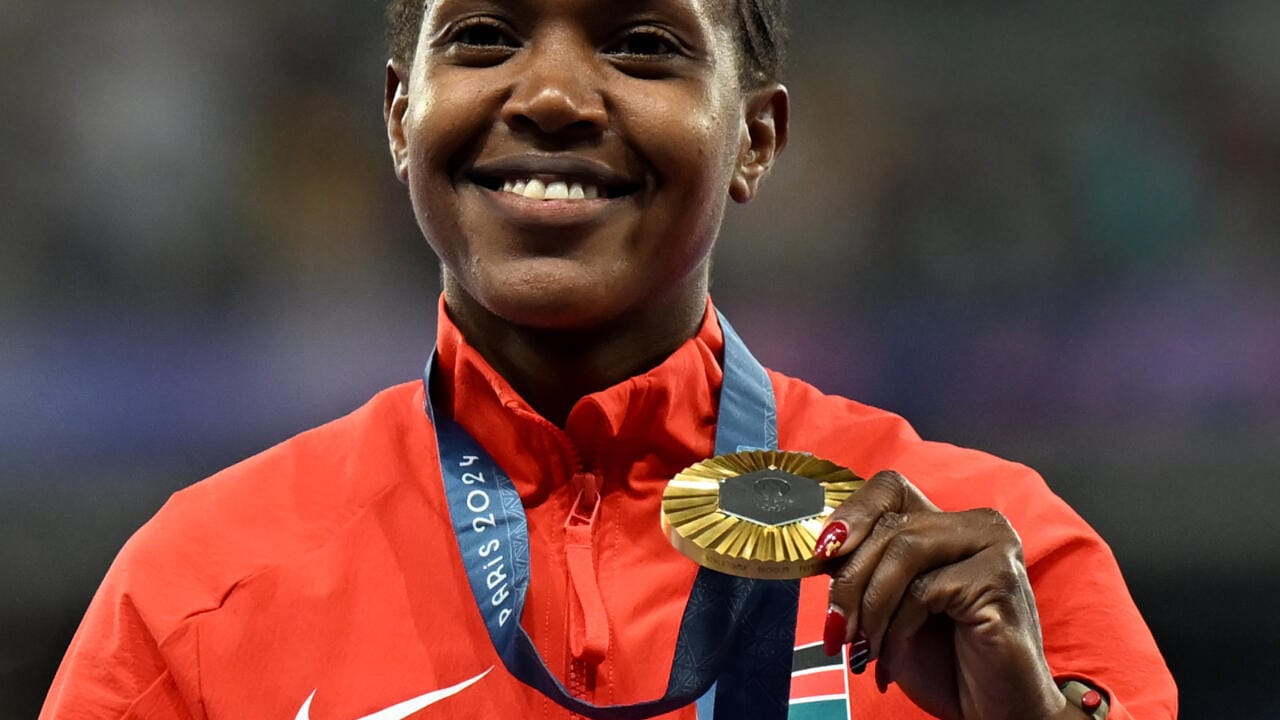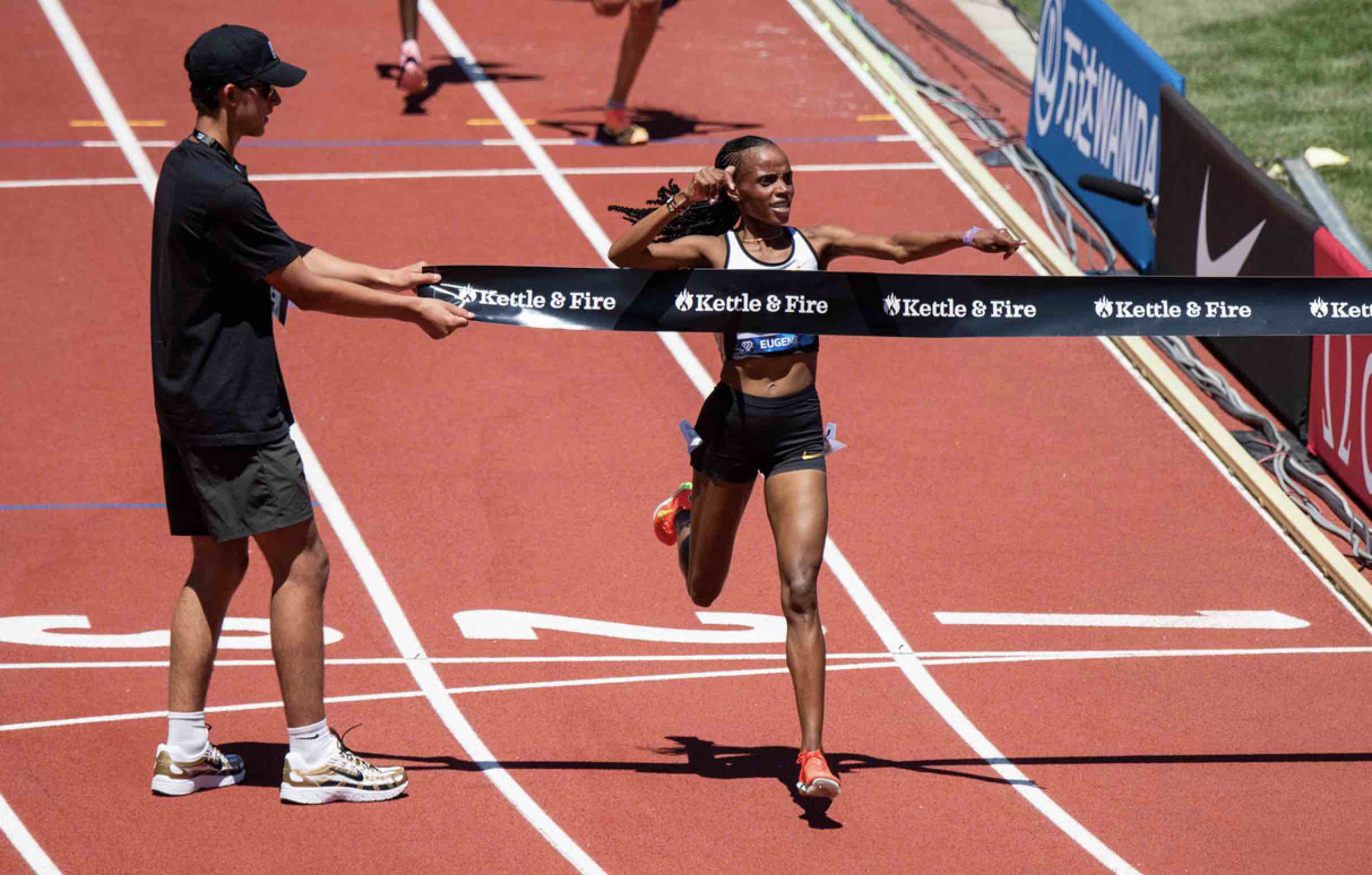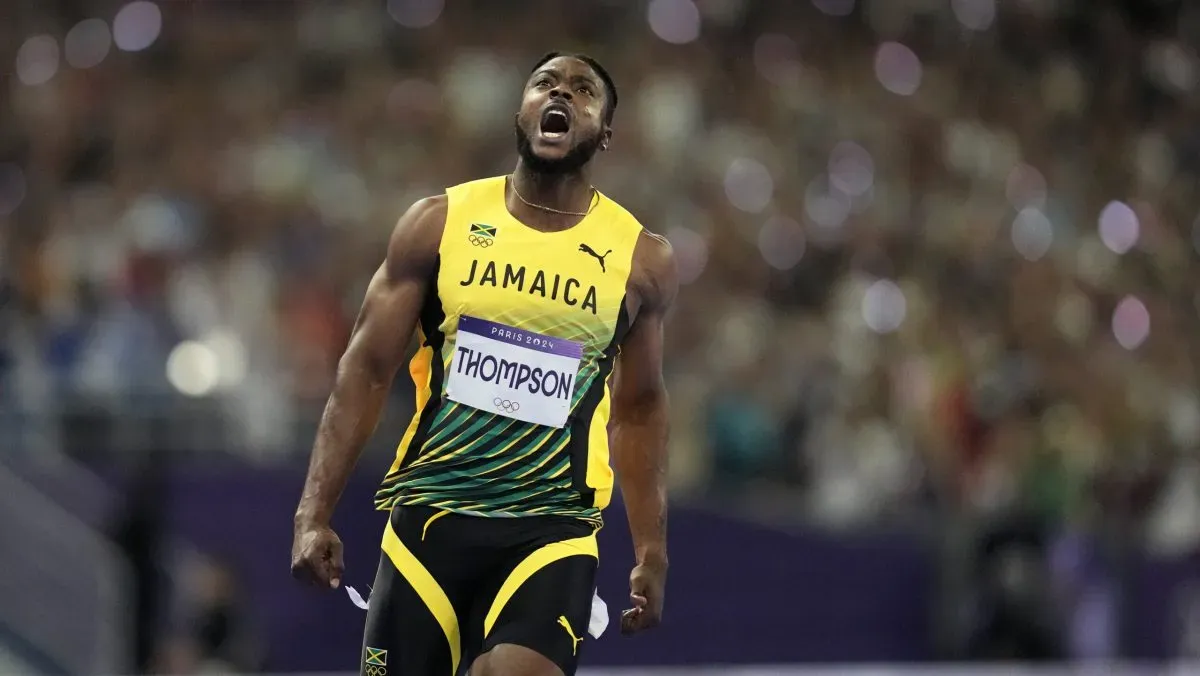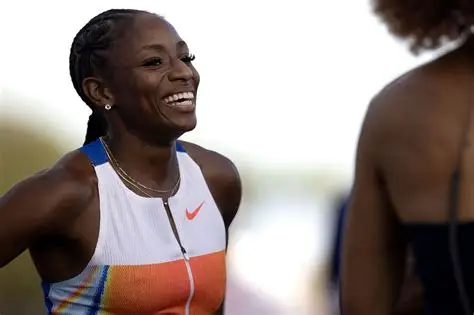A Day of Defiance: How the 2025 Prefontaine Classic Shattered the Ceiling of Human Performance

A Seismic Shift at Hayward Field
Track and field is a sport often measured in milliseconds and millimeters — and in moments that live on for generations. On July 5, 2025, at the 50th running of the Prefontaine Classic, something unprecedented occurred at Hayward Field in Eugene, Oregon.
What unfolded wasn’t just a competition. It was a watershed moment featuring two world records, multiple national records, and a cascade of personal bests. If there were any doubts about whether track and field is entering a new golden age, they were silenced in one afternoon (SB Nation, 2025).
Faith Kipyegon: From Champion to Immortal
Already a two-time Olympic gold medalist and world record holder, Kenya’s Faith Kipyegon cemented her legend by rewriting her own 1500m world record with a stunning time of 3:48.68, breaking her previous mark of 3:49.11 set in 2023 (World Athletics, 2023).
Her lap splits were surgical: 63.2s, 62.8s, 61.4s, and a closing 61.1s, with a final 400m under 58 seconds, showcasing a technically perfect middle-distance race (SB Nation, 2025). Analysts praised her poise and pacing, with former world champion Jenny Simpson calling it “a revolution in pacing and poise.” Kipyegon became the first woman ever to run sub-3:49 twice (Runner’s Tribe).

Beatrice Chebet: Breaking the Unbreakable
Later that day, Kenya’s Beatrice Chebet became the first woman to break the 14-minute barrier in the 5000m, running an astonishing 13:58.06 to shatter Gudaf Tsegay’s 14:00.21 record set in 2023 (Reuters, 2025; World Athletics, 2023).
Remarkably, Chebet ran the final four laps solo, closing the last 1000m in 2:41 and her final lap in approximately 61 seconds — a sprint finish typically unheard of in distance races. This performance signaled her transformation from a 3000m specialist to one of the fiercest long-distance runners today (Let’s Run, 2025).

Kishane Thompson: The Bolt Shadow Fades
Jamaica’s Kishane Thompson sprinted to a 9.85s finish in the men’s 100m despite running into a slight -0.4 m/s headwind, defeating elite competitors including Ferdinand Omanyala and Brandon Carnes (The Guardian, 2025). His final 40m split of 3.31 seconds mirrored the closing speed of Usain Bolt’s legendary 2009 Berlin world record (World Athletics, 2009). At just 23, Thompson is widely seen as Jamaica’s top sprint medal hope for the 2025 World Championships in Tokyo.

Melissa Jefferson-Wooden: The Return of American Firepower
American sprinter Melissa Jefferson-Wooden edged out Julien Alfred with a time of 10.75s in the women’s 100m final, which was the fastest by an American woman this year and part of the fastest top-five finish in Diamond League history, with five women finishing under 10.90 (World Athletics Results, 2025). Jefferson-Wooden has recorded three sub-10.80 times this season, more than any American woman since Carmelita Jeter in 2011 (World Athletics Stats Zone).
Her sprint cadence of 4.65 steps per second and biomechanical style have drawn comparisons to Jamaican legend Shelly-Ann Fraser-Pryce, marking a return to American dominance in women’s sprinting.

Niels Laros: Europe’s Mile Miracle
Dutch prodigy Niels Laros ran a surprising and tactical mile victory in 3:47.89, the fastest European mile in Diamond League competition since Jakob Ingebrigtsen’s 2021 performance (European Athletics, 2025). He used a negative split strategy — running the first 800m in 1:52 and closing with a blistering 54.7 seconds on the final lap.
Laros’s coach attributes this breakthrough to innovative hybrid aerobic-anaerobic training and high-altitude conditioning in Font-Romeu, France (Let’s Run, 2025).

Rudy Winkler: The Quiet Giant Roars
American hammer thrower Rudy Winkler launched a throw of 83.16 meters, setting a new American record and recording the world’s longest hammer throw since 2008 (USATF, 2025; Track & Field News, 2025). Winkler’s new rotational loading techniques, developed with biomechanical expert Dr. Klaus Bartonietz, helped him surpass reigning Olympic champion Wojciech Nowicki and Diamond League winner Bence Halász, making this the deepest hammer throw final in the US in over two decades.

The Technology Factor: Track Science, Super Shoes, and Pacing Systems
The performances were amplified by cutting-edge technology. Hayward Field’s Mondo X Elite track surface provides enhanced energy return and reduced slippage, which can improve sprint times by up to 0.3 seconds and distance performances by 1–2% (World Athletics, 2024).
The introduction of wave light pacing systems — LED pacing lights embedded in the track — allowed athletes like Kipyegon and Chebet to monitor real-time splits precisely, enhancing pacing strategy.
In addition, the evolution of super spikes — such as Nike’s Air Zoom Victory and Adidas’s Avanti TYO, which integrate carbon fiber plates and energy-return foams — provide a conservative 1.5–3% performance boost (Journal of Sports Sciences, 2024).
More Than a Meet — A Preview of Olympic Glory
The 2025 Prefontaine Classic was not simply a competition; it was a clear demonstration of human potential when talent, technology, and training innovation converge. From Faith Kipyegon’s masterful pacing to Rudy Winkler’s hammer revolution, every event was a reminder that the boundaries of athletic achievement continue to expand.
Looking ahead, the performances at Hayward Field set the stage for a highly anticipated 2025 World Championships in Tokyo — a critical benchmark before the 2028 Olympics in Los Angeles. Athletes like Kipyegon, Chebet, and Thompson have emerged not only as world record holders but as favorites to dominate Olympic podiums.
For Kipyegon and Chebet, their historic breakthroughs signal a shift in middle- and long-distance running dominance, challenging previous pacing and endurance paradigms (World Athletics, 2025). Sprinters like Thompson and Jefferson-Wooden are ushering in a new era of explosive speed and competitive depth in the sprints.
Moreover, technological advancements in track surfaces and super spikes hint that performance ceilings could continue to be broken as these innovations become standard at Olympic venues (Journal of Sports Sciences, 2024).
In short, the Prefontaine Classic was more than a milestone — it was a harbinger of Olympic-level excellence, promising thrilling competition, record-chasing drama, and new legends on the rise. The world should brace itself: the next Olympic Games could redefine athletics history once again.





